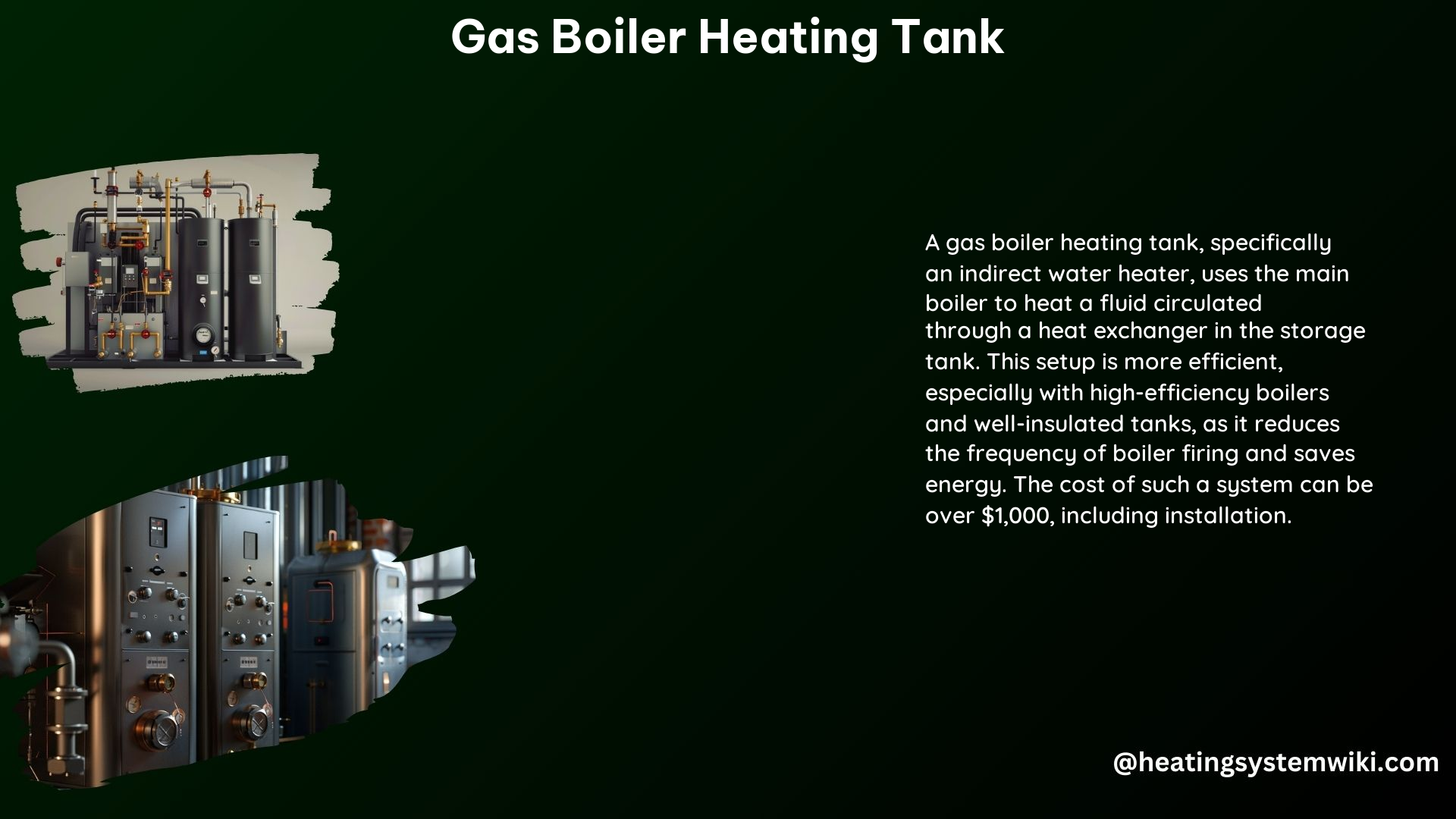A gas boiler heating tank, also known as a combi boiler, is a highly efficient and versatile heating system that provides both space heating and hot water for residential and light commercial applications. This comprehensive guide will delve into the intricate details of the water tank, immersion heater, and optimal temperature settings, equipping you with the knowledge to make informed decisions and maintain your gas boiler heating system effectively.
Understanding the Water Tank
The water tank in a gas boiler heating system serves as the heart of the system, storing and distributing hot water throughout the home. These tanks are typically constructed from durable materials, such as stainless steel or copper, and are designed to withstand the high temperatures and pressures associated with the heating process.
The capacity of the water tank can vary significantly, ranging from 30 to 100 gallons, depending on the size of the home and the household’s hot water demands. Larger homes or households with higher hot water usage will generally require a larger tank capacity to meet their needs.
To minimize heat loss and maintain a consistent water temperature, the water tank is typically insulated with high-performance materials, such as polyurethane foam or fiberglass. The insulation thickness can range from 1 to 3 inches, depending on the manufacturer’s specifications and the local climate conditions.
The Immersion Heater: Maintaining Water Temperature

The immersion heater, also known as the heating element, plays a crucial role in the gas boiler heating tank system. This electric-powered component is typically located at the bottom of the water tank and is responsible for heating the water to the desired temperature, even when the boiler is not actively heating the water.
The immersion heater’s power output can range from 3 to 9 kilowatts (kW), depending on the size of the water tank and the system’s overall heating requirements. Higher-capacity tanks will generally require a more powerful immersion heater to ensure efficient and consistent water heating.
The immersion heater is typically controlled by a thermostat, which monitors the water temperature and cycles the heater on and off as needed to maintain the set temperature. This feature ensures that the water in the tank remains at the desired temperature, typically between 120°F (49°C) and 140°F (60°C), even when the boiler is not in use.
Optimal Temperature Settings
The ideal temperature setting for a gas boiler heating tank can vary depending on several factors, including personal preference, local climate, and energy efficiency considerations.
A common temperature range for gas boiler heating tanks is between 120°F (49°C) and 140°F (60°C). This range provides a balance between hot water availability, energy efficiency, and safety, as temperatures above 140°F (60°C) can pose a scalding risk.
However, some systems can be set as low as 110°F (43°C) or as high as 150°F (66°C), depending on the specific needs and preferences of the homeowner. It is essential to consult the manufacturer’s instructions and consider factors such as energy consumption, hot water demand, and potential scalding risks when determining the optimal temperature setting for your gas boiler heating tank.
Technical Specifications of Gas Boiler Heating Tanks
To help you better understand the capabilities and limitations of gas boiler heating tanks, here are some key technical specifications:
| Specification | Range |
|---|---|
| Capacity | 30 to 100 gallons |
| Max BTU Input | 100,000 to 199,000 BTU/h |
| Fuel Source | Natural Gas or Propane |
| Weight | 75 to 150+ lbs |
| Warranty | Typically 10 years |
| Efficiency | ENERGY STAR certified for high efficiency and low NOx emissions |
It’s important to note that these specifications can vary depending on the manufacturer and model of the gas boiler heating tank. Always refer to the manufacturer’s documentation for the exact technical details of your system.
DIY Considerations
When it comes to installing or maintaining a gas boiler heating tank, it’s crucial to follow all safety guidelines and manufacturer instructions to ensure the system’s proper and safe operation.
Proper insulation is essential to minimize heat loss and maintain the water temperature. Ensure that the tank is adequately insulated, with a minimum of 1 inch of high-performance insulation material, such as polyurethane foam or fiberglass.
Regular maintenance, including flushing the tank, checking the anode rod, and inspecting the heating elements, is also crucial to extend the system’s lifespan and maintain optimal performance. Consult the manufacturer’s recommended maintenance schedule and follow their instructions carefully.
If you are not experienced with HVAC systems, it is highly recommended to hire a professional for the installation and maintenance of your gas boiler heating tank. Attempting DIY work on these systems without the proper knowledge and expertise can be dangerous and may void the manufacturer’s warranty.
Conclusion
The gas boiler heating tank is a versatile and efficient heating system that provides both space heating and hot water for residential and light commercial applications. By understanding the intricacies of the water tank, immersion heater, and optimal temperature settings, you can ensure the proper installation, maintenance, and operation of your gas boiler heating system, maximizing its performance and energy efficiency.
Remember to always prioritize safety, follow manufacturer instructions, and consider hiring a professional if you are not confident in your HVAC expertise. With the right knowledge and care, your gas boiler heating tank can provide reliable and cost-effective heating and hot water for years to come.
References
- A. O. Smith. (n.d.). Natural Gas Hot Water Heaters | Buy at Lowe’s | A. O. Smith. Retrieved from https://www.aosmithatlowes.com/products/water-heaters/gas-water-heaters/
- The Home Depot. (n.d.). Natural Gas – Boilers – Heaters – The Home Depot. Retrieved from https://www.homedepot.com/b/Heating-Venting-Cooling-Heaters-Boilers/Natural-Gas/N-5yc1vZc4m2Z1z0z72l
- The Home Depot. (n.d.). Gas – Water Heaters – Plumbing – The Home Depot. Retrieved from https://www.homedepot.com/b/Plumbing-Water-Heaters/Gas/N-5yc1vZbqlyZ1z109sr
- A. O. Smith. (n.d.). ProLine XE Residential Combi Boilers for Heat & Hot Water. Retrieved from https://www.hotwater.com/residential/water-heaters/combi-boiler/
- Sippin Energy Products. (n.d.). Indirect Water Heaters – Sippin Energy Products. Retrieved from https://sippin.com/hvac/hot-water-systems/indirect-water-heaters/
